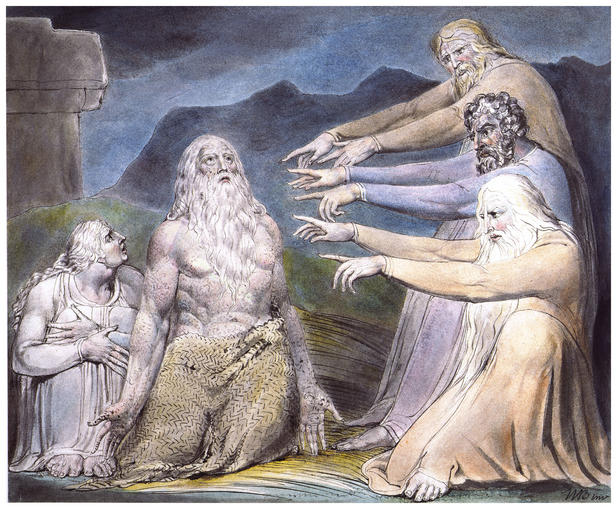By Megan Wilson
Blake’s A Descriptive Catalogue of Pictures is much more than a simple description of the paintings Blake had for sale in London, 1809. The first evidence is the prologue where Blake, or as he calls himself “Mr. B,” defends his methods of art against the likes of Titian, Correggio, Rubens, and Rembrandt. Despite his hostile tone, the prologue is an acceptable place for such a defense, and the reader may allow the commentary without taking much exception to it.
 But the Prologue is just the beginning.
But the Prologue is just the beginning.
This Descriptive Catalogue describes most of Blake’s works by how they triumph over his competitor’s “imitations.” One of my favorite examples of this is the section on item “Number III. Sir Jeffery Chaucer and the nine and twenty Pilgrims on their journey to Canterbury.” Mr. B. mocks his self-proclaimed rival Mr. S, aka Thomas Stothard, a very popular book illustrator at the time. The setting of Stothard’s version of the Canterbury Pilgrims, Blake argues, is not accurate to Chaucer’s description:
The scene of Mr. S’s Picture is by Dulwich Hills, which was not the way to Canterbury; but, perhaps, the painter thought he would give them a ride about, because they were a burlesque set of scare-crows, not worth any man’s respect or care.
Well, I can understand someone being particular about accuracy of representation of another artist’s work, especially of someone as important as Chaucer. Blake seemingly continues to bring down Stothard for the honor of Chaucer by criticizing Stothard’s inclusion of a Sea Captain character:
But the prospectus tells us, that the painter has introduced a Sea Captain; Chaucer has a ship-man, a Sailor, a Trading Master of a Vessel, called by courtesy Captain, as every master of a boat is; but this does not make him a Sea Captain. Chaucer has purposely omitted such a personage, as it only exists in certain periods: it is the soldier by sea. He who would be a Soldier in inland nations is a sea captain in commercial nations.
I’m actually quite impressed by this attention to detail on Blake’s part. While I am still unsure that such criticism belongs in a “descriptive catalogue,” if Blake had just left his grievances here . . . maybe, I don’t know, someone might have taken them seriously. Poor Blake. He couldn’t help himself:
All is misconceived, and its mis-execution is equal to its misconception. I have no objection to Rubens and Rembrandt being employed, or even to their living in a palace; but it shall not be at the expence [sic] of Rafael [sic] and Michael Angelo [sic] living in a cottage, and in contempt and derision. I have been scorned long enough by these fellows, who owe to me all they have; it shall be so no longer.
I found them blind, I taught them how to see;
And, now, they know me not, nor yet themselves.
If I had been Blake’s competitor at the time, had picked up his Descriptive Catalogue, and found myself reading this, I might have laughed or I might have been deeply concerned for my own safety.
—
